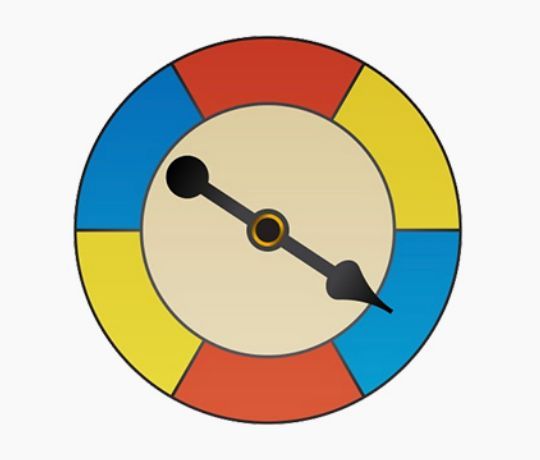Table of contents
- 1. Intro to Stats and Collecting Data55m
- 2. Describing Data with Tables and Graphs1h 55m
- 3. Describing Data Numerically1h 45m
- 4. Probability2h 16m
- 5. Binomial Distribution & Discrete Random Variables2h 33m
- 6. Normal Distribution and Continuous Random Variables1h 38m
- 7. Sampling Distributions & Confidence Intervals: Mean1h 3m
- 8. Sampling Distributions & Confidence Intervals: Proportion1h 12m
- 9. Hypothesis Testing for One Sample1h 1m
- 10. Hypothesis Testing for Two Samples2h 8m
- 11. Correlation48m
- 12. Regression1h 4m
- 13. Chi-Square Tests & Goodness of Fit1h 20m
- 14. ANOVA1h 0m
4. Probability
Multiplication Rule: Independent Events
Struggling with Statistics?
Join thousands of students who trust us to help them ace their exams!Watch the first videoMultiple Choice
The spinner below has 6 equal regions. Find the probability of landing on yellow for the first spin and not landing on yellow on the second spin.

A
0.11
B
0.22
C
0.66
D
0.88
 Verified step by step guidance
Verified step by step guidance1
Count the number of yellow regions on the spinner. There are 2 yellow regions out of a total of 6 regions.
Calculate the probability of landing on yellow for the first spin. This is the number of yellow regions divided by the total number of regions: \( \frac{2}{6} \).
Calculate the probability of not landing on yellow for the second spin. Since there are 4 non-yellow regions, the probability is \( \frac{4}{6} \).
Multiply the probability of landing on yellow on the first spin by the probability of not landing on yellow on the second spin: \( \frac{2}{6} \times \frac{4}{6} \).
Simplify the resulting fraction to find the final probability.

 5:54m
5:54mWatch next
Master Probability of Multiple Independent Events with a bite sized video explanation from Patrick
Start learningRelated Videos
Related Practice

